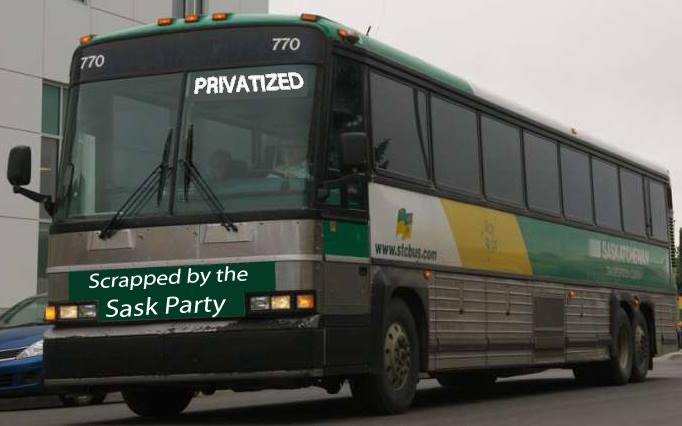Saskatchewan Transportation Company (STC) Annual Reports, available online, suggest that between 2010 and 2012 the Sask Party had figured out how to run STC. Ridership had increased in 2010, the first year-over-year increase in ridership since the NDP lost the election of 2007.
Two seat sales had offset a 2010 fare increase; the May and September $10 one way fare for over-sixties, and the summer $40 unlimited monthly youth pass. May and September ridership went up by 7.4%, and the youth passes increased the number of summer riders by 3.7%.
By the end of the next year (2011), those reductions in fares had increased ridership to its highest level since 2000. Passenger revenue had increased by $679,000 over two years.
The way forward seemed clear: lower fares to attract more passengers. The need to subsidise riders would not disappear; like city busses, STC was a public transportation system cost-shared with riders. In 2011 the government share of costs worked out to $38.58 per rider.
Unfortunately, in 2012 STC began a string of punishing fare increases, sabotaging public transportation in the process. April of 2012 saw a 4.76% fare increase. Ridership that year dropped over 6000 passengers, passenger revenue declined $300,000, and per-passenger subsidies went up to $42.08.
2013 saw an accelerated attack on passengers’ pocket-books, with a January fare increase of 4.56% followed by a second fare increase of 4.7% in October. By year end another 6,000 passengers stayed home, but those who could still pay the increased fares temporarily added $390,000 to passenger revenue. However, the drop in passenger numbers still meant a jump in subsidy/passenger to $48.18.
In 2014, an August fare increase of 5.5% contributed to a decline of 14,582 passengers, a passenger revenue decrease of $118,000, and a resultant subsidy/passenger increase to $50.37. A March of 2015 fare increase of 4.5% provoked a loss of over 60,000 passengers. Passenger revenue plummeted $793,000 and the subsidy had to increase to $66.20 per passenger. The average fare by 2015 had been increased by 30.6% over those of 2012.
Even without a fare increase in 2016, the chickens came home to roost; another one year decline of 14,700 passengers, a passenger revenue decline of $961,00, and the per passenger subsidy ballooned to $75.25. The bus had been made too expensive for nearly 100,000 riders in five short years.
In 2017, the Sask Party seized the opportunity to complain that subsidising STC cost too much per passenger, taking no responsibility for their role in creating the resulting ridership losses.
But the Sask Party has not stopped there. Now, with no credible numbers to back them up, the Sask Party is predicting a 2017/18 subsidy of $94 per rider, or as Brad Wall cleverly called it in the legislature, almost $100/rider. The Sask Party knows that making up scary numbers about the future of STC just before they close it down will mean they can never be proven wrong.
I have a few numbers of my own. If all the passengers in 2016 had been given free rides, STC would have lost $6 million in passenger revenue, and the per rider subsidy would have gone up to $107/ rider. However, if those free rides had doubled the 2016 STC ridership, a not unlikely event, the total subsidy/rider would have dropped to only $53.59, about 2/3 the actual 2016 subsidy/rider. With free rides for all!
Subsidy/rider, it seems, is a slippery concept. Lower fares mean more riders and lower subsidies per rider. We need to take Sask Party doom and gloom about STC with the proverbial grain of salt. We would do well to remember that STC is a public service, and one worth saving. Do not let the Sask Party slash the tires and then sell off STC as salvage to their for-profit corporate supporters.
__________________________________________
Researched and written by John Thornton. Posted July 2017.
